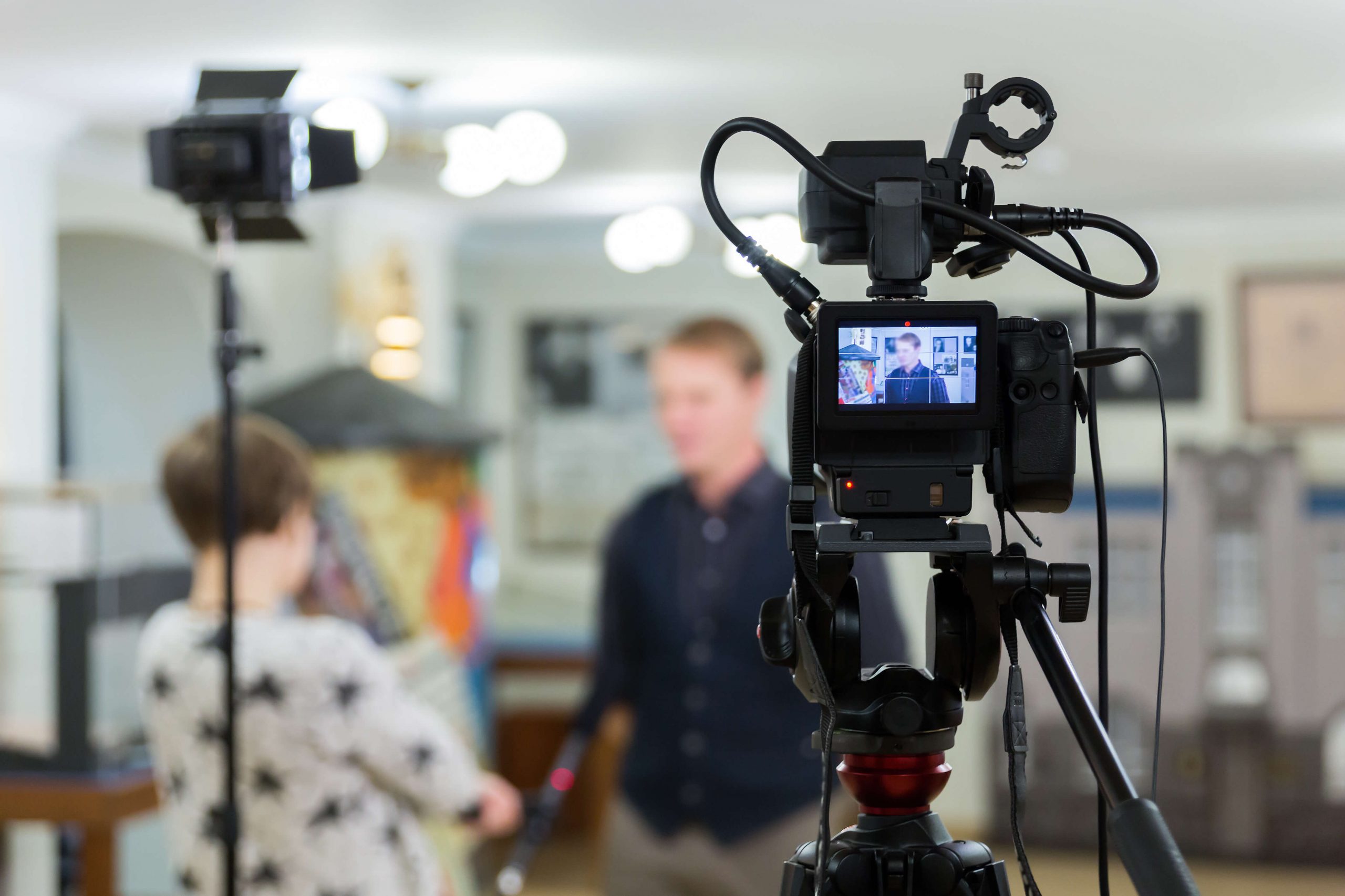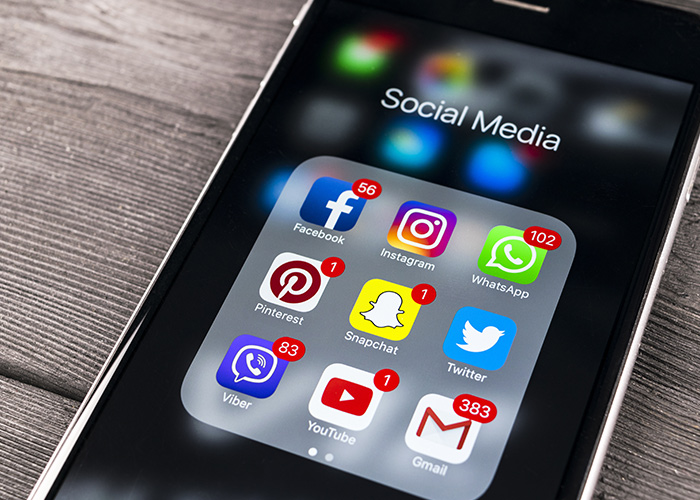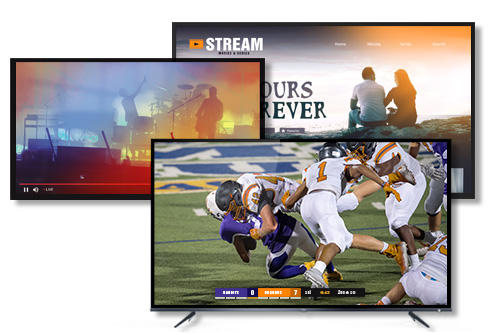Live Streaming Best Practices to Drive Engagement and Generate Leads

You’ve likely seen influencers on social media going live to interact and engage with their fans. But the benefits of live streaming go beyond that.
The online live streaming industry witnessed a massive growth of 99 percent from 2019 to 2020. It’s even projected to be valued at $184.27 billion by 2027. Companies can leverage this growth and use live streaming for generating leads and boosting brand awareness.
Let’s look at some live streaming best practices to drive engagement.
Why Does Your Business Need To Leverage Live Streaming?
If you’ve never streamed live video, you must be thinking: Why would my business ever want to go live? After all, it’s unpredictable. You never know if viewers will attend, let alone if you’ll achieve the results you’re aiming for.
But here’s the catch. Live streaming is the new radio. It’s a powerful marketing tool that can support your lead generation and sales efforts. Most importantly, people want to watch live streams. The viewership of live video grew by 93 percent from 2019 to 2020, and seven out of ten people who watch live streams tune into a live stream every day.
Let’s look at how live streaming can benefit your company.
1. Builds Trust
Live video allows you to be candid and unpolished. You can show yourself the way you are without doing too much editing. While the video quality may not be as high as professionally produced videos, live videos allow you to present yourself in front of your customers genuinely and authentically. This helps you build trust and credibility.
2. Creates Real-Time Engagement
Live videos are always more engaging. One reason for this is that the content produced in live videos is unique. Neither you, the brand, nor the viewer can predict what’s coming up in a live broadcast. In fact, live videos hold user attention 10-20 times longer than pre-recorded videos.
3. Raises Brand Awareness
Companies can use live streaming for more than just promoting their products or services. You can use it to communicate your company’s message, answer your customers’ queries, or conduct a virtual interview with an industry leader. All these content ideas boost brand awareness and allow you to strengthen your relationship with your audience.

4. It’s Easier to Produce
Going live might seem intimidating, but it’s easier than you think. Once you’ve figured out the basics of live streaming, it becomes quite effortless. You can simply start a live video and interact with your audience. Of course, you can come up with unique content ideas — but unlike pre-recorded explainer videos, you don’t need a script, editing, production, etc.
5. Provides Insight Into Your Audience
There’s no better way to understand what your audience needs than by interacting with them live. Companies can host live streams on various topics and track metrics like viewership and engagement to determine what their audience wants to see. You can then tailor the content you provide to their needs.
Live videos allow you to present yourself candidly and unaltered. But you need a plan to ensure that your live stream goes off without a hitch. The last thing you want is for your stream to cut off during a session or get ruined by spammers in the chat. Having a strategy helps you stream with confidence.
The remainder of this article will talk about the strategies you can implement before, during, and after a live stream to ensure success.
Pre-Stream Best Practices and Engagement Strategies
Before you go live, you want to make sure that you’re streaming-ready. Here are a few items to cross off your list before you start a live video.
1. Check Your Computer
Starting failure is a significant quality issue when it comes to live video. Live streams fail to start 2.6 percent of the time.
Make sure there are no technical issues with the computer or laptop from which you’re streaming. Check the browser version to see if it’s updated. Check your camera to ensure that it’s functioning correctly. Close any tabs or downloads slowing down your setup. If you plan to share your screen, make sure the screen has only those elements you want your audience to see.
2. Check Your Equipment
Once you’ve sorted your computer and browser, check if your equipment and other external factors are working correctly. If you’re using an external webcam, see if it’s functioning well. Monitor the echo and feedback. For recommendations on all the best live streaming equipment within a reasonable budget, check out this blog.
Lastly, ensure that the guests are assets are ready in the staging area and check your internet connection.

3. Notify Your Audience in Advance
Once you have the technicalities sorted, notify your audience that you’re about to go live. If you plan to go live on Instagram or YouTube, inform your audience a few hours in advance. This way, you give them the buffer to adjust their plans and make time to join your stream.
Follow the above tips if you live stream regularly, and you already have an audience that joins your live streams. If you plan to go live for the first time, or if you’re about to make a big announcement, market your broadcast in advance to create buzz and attract more viewers. Facebook and Instagram ads do a great job creating hype and helping you reach a broader audience in less time.
4. Pique Interest With a Catchy Headline and Description
When you notify your audience about the upcoming live stream, don’t just tell them that you’re about to go live. Pique their interest by writing an exciting headline and description. Mention what you’re going to talk about in the live video and if anything exciting will take place. If you plan to collaborate with someone or invite a guest, give a slight hint about it. The more hype and interest you generate before the stream, the more viewership and engagement you’ll receive during the stream.
Live Stream Best Practices and Engagement Strategies
Once you’re live, follow these strategies to boost engagement and generate leads.
1. Brand Your Video
Many brands, especially those new to live streaming, overlook the importance of branding. It’s essential to understand that live video is also a part of your content strategy, so adding an element of branding to it is crucial. In fact, a consistent representation of your brand can increase revenue by 33 percent.
Brand your videos across all platforms and channels. While the scope for branding in live videos is less compared to pre-recorded videos, you can still include your brand logo and customized color scheme.
2. Try Simultaneous Broadcasting on Multiple Platforms
Choosing the right channel and platform for live video streaming can be tricky. Facebook remains the leader in terms of live video numbers thanks to its multi-billion active user base. YouTube and Twitter aren’t far behind, and Instagram is also a strong contender.
Overlooking any channel can result in the loss of a potential audience. Therefore, brands should try simulcasting, or distributing live content to multiple online destinations at the same time. Tools like Wowza Streaming Engine and Wowza Streaming Cloud allow you to live stream to Facebook, YouTube, Twitch, and other platforms simultaneously.

3. Add Real-Time Visual Elements
Visuals can make your live videos more exciting and boost engagement and brand recognition. Adding unique visual elements like images, GIFs, infographics, and short videos can add a component of engagement to your live video.
However, you may need to prepare these visuals before the live stream starts so that you can have them on hand when you need them. You can also use a live streaming software that allows you to add pictures and video clips to your live video in real time.
4. Encourage Users to Take Action
Live streams are nothing less than virtual events. Your audience doesn’t join your live stream to passively watch you talk. Make sure that your audience participates during the stream by creating an interactive experience.
There are various strategies to encourage your audience to take action. A proven tactic is to start a conversation by asking open-ended questions. You can ask participants where they are from, what they want to talk about, or something related to the content that you’re streaming.
Including buttons is another technique to encourage action. You can add buttons like “Like,” “Share,” etc. If you want to generate leads during your live video, you can use a QR code generator and make a custom QR code. The code can be linked to an email signup form to allow viewers to join your email list.
While many people watch videos online, a large share of the population still uses desktops to consume video content, especially live streams. A QR code can bridge the gap between mobile and desktop devices. Viewers can use their phones to scan the code and sign up for your email list. Since all modern-day mobile phone cameras come with a QR code API, scanning QR codes has become seamless.
5. Surprising Your Viewers
Don’t let the audience predict what they will see in the live video. Keep surprising them by introducing new ideas, visuals, guests, etc. We live in a world where the average human attention span has dropped to eight seconds. While live video streaming itself is a great engagement tool, you need to ensure that your viewers remain excited and interested during the live video.
Post-Stream Best Practices and Engagement Strategies
Your stream has come to an end, and it was awesome. A large audience showed up, and you received the engagement you wanted. Now what? There are a few post-stream steps you need to take to maximize the impact and engagement of your live streams. These include:
1. Record Your Live Streams
Record your live streams and make them into video on demand (VOD) assets that are available for your audience at any point in time. Video content has a lengthy shelf life. By resharing streams after a live event has ended, you’re able to generate extra revenue and expand your audience.
A streaming software or service can be used to enable nDVR and Live-to-VOD capabilities — thereby ensuring that you get the most out of your content.

2. Turn the Stream Into a Blog Post and Audio Podcast
In addition to merely recording the video, you can convert it into an audio podcast or transcribe it into a blog post. This way, you can reach consumers who don’t watch live videos across additional channels.
3. Send Out Emails
Ensure that you collect as many email addresses as possible during the stream. Once the stream is over, send emails asking for feedback or sharing some interesting content. You can also promote a product or service if you want. It’s essential to engage your audience after a live stream, and email is an excellent tool to do that.
Conclusion
The rise of live streaming has provided brands with a new content opportunity, which is less resource-intensive and can deliver a high ROI. However, brands need the right live streaming strategies to make the most out of it.




